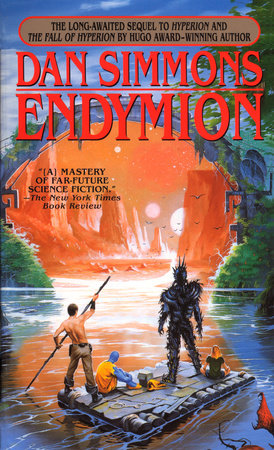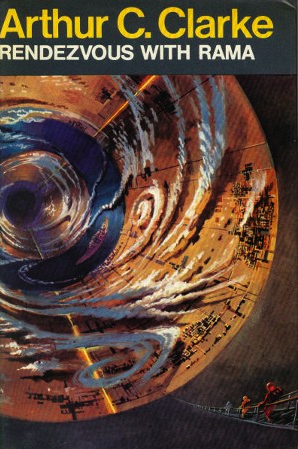|
The distinguishing characteristic of the science fiction genre is that it sets its stories in futures where there are scientific and technological advances that have greatly expanded the capabilities of humanity, as well as social changes that have altered society. But this merely describes the genre based on the settings it uses. However, what is its purpose? As it turns out, the general purpose of most science fiction is by and large no different from that of regular stories. Science fiction is often just an artifice that allows the storyteller to generate situations that produce ethical dilemmas and existential quandaries. A favorite topic in science fiction is what it means to be human. This has been explored in many science fiction settings including the epic saga of Star Trek and its many iterations. In Star Trek the Original Series, the iconic half-Vulcan half-human character of Spock, played by the late Leonard Nimoy, was constantly trying to reconcile the Vulcan devotion to logic and control of emotions with the desires of his human half. In Star Trek Next Generation, Data, the Android played by actor Brent Spiner, sought to be human. In Star Trek Voyager, the holographic doctor, played by actor Robert Picardo, aspired to have the same rights that a human being has. Another often encountered topic is the dichotomy between being an individual and being part of a society (of which the Borg are a recurring case in Star Trek), and what life is and whether it is morally right to extinguish it. A great example of the latter plot device in Start Trek Voyager, is an episode where two crewmen, Tuvok and Nelix are fused into one being (called Tuvix) as a result of a bizarre transporter accident. When the crew of the Enterprise finally figures out how to reverse the process, the blended character, Tuvix, decides he likes being who he is and states that separating him into the original persons would be tantamount to killing him. Should he be subjected to the process against his will? Should his desire to remain how he is be respected? Despite the merits of the above approach, these stories merely use science fiction as a means to an end, and do not exploit the full potential of the genre. Nevertheless, this approach is certainly several notches above the most common use of science fiction, which is as an excuse to pit humans against monsters or create flashy action sequences studded with spaceships, alien armies, and apocalyptic weaponry. In these settings, the futuristic backgrounds where the action takes place, the technology, and the science are often no more than an afterthought, even in many science fiction books where these topics can be examined to a greater extent than movies or series. In my opinion, science fiction is at its best when it explores science and technology in depth. I consider that this is the true purpose of science fiction, and those science fiction stories that adopt this practice as part of the storyline, which I call the Grand View of Science Fiction, are often the best ever produced in the genre. I will give you two examples.  The first example is the epic series of books set in the Hyperion universe, where the author Dan Simmons conveys one of the most magnificent and amazing visions of the future of humanity that I have ever read. The books are a tour de force in world building and they are awash with the application of scientific principles on a microscopic and macroscopic scale. One of the scientific advancements in this futuristic society is what are called “farcasters”. These are structures that employ encased black holes to bend space-time and generate gateways between different areas of a planet and between different worlds, allowing for instantaneous travel. This permits people to live in one planet and work in another one, and those who are rich enough have houses where the different rooms of the house are located in different worlds and are all connected by farcaster portals. However, one of the greatest images that endured in my mind after reading these books was that of the River Tethys. This is a river that flows across more than 200 different worlds in sections interconnected by farcaster portals! Simmons’ Hyperion books, of course, have all the requisite war, action, mystery, and intrigue along with plenty of social and religious commentary, but the exploration of concepts like the farcaster and their uses to create a multiplanetary society and shape its different cultures is one of the highlights of this series.  The second example is Rendezvous with Rama by Arthur C. Clarke. In the novel a huge cylindrical vessel enters the solar system and a team of astronauts is sent to intercept it and explore. They manage to enter the cylinder, and what ensues is not a battle with space monsters, but the glorious exploring of a marvelous world. Rama is a hollow cylinder with an internal diameter of 10 miles and a length of 31 miles. The curved surface of its interior has what appear to be several towns. Individuals can glide weightlessly along the central axis of Rama, but its slow rotation generates an artificial gravity which increases towards the inner surface of the cylinder. When you walk on the inner surface of Rama, the land around you bends towards the sky following the shape of the cylinder, so the land is the sky! Even more disconcerting, in the middle or Rama there is a stretch of water christened the Cylindrical Sea, which bisects the cylinder, and when you stand next to the sea you see it rise with the land on both sides following the inner surface of the cylinder and meet above you. There is of course more to the story, but the description of this inner world and the various scientific laws that govern its operation is a true feast for the imagination. Now, I do admit that I enjoy the run of the mill science fiction that’s out there. In fact, I have a collection of books and movies that cover themes ranging from the human condition to action heroes and monsters. But sometimes, when I crave for more than the exploration of ethical dilemmas or the blowing up of aliens, I turn to those works that explore the Grand View of Science Fiction. Those are the best! The figures of the book covers are copyrighted images which are used here under the legal doctrine of Fair Use.
0 Comments
Your comment will be posted after it is approved.
Leave a Reply. |
Details
Categories
All
Archives
June 2024
|
 RSS Feed
RSS Feed